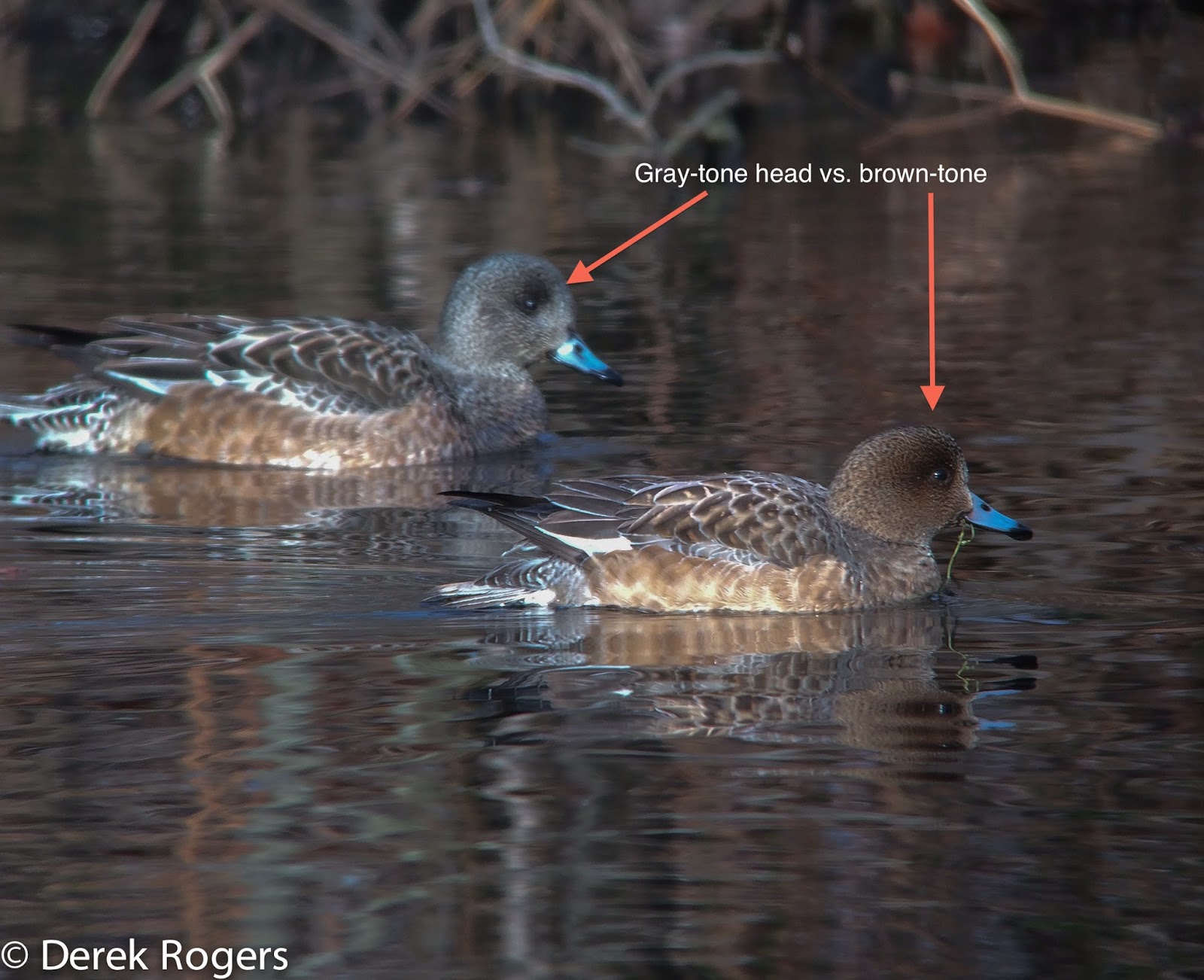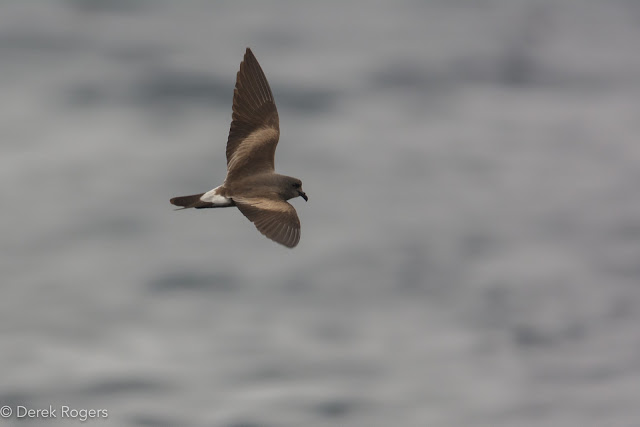Smith Point County Park - February 26, 2012
Sunday was a gorgeous day to cruise the Smith Point County Park outer beach in search of avian life. The northwest wind made for calm viewing conditions on the ocean, and I was hoping that the previous days of strong winds would force some ocean goers closer inshore. The dune blocked any bit of blowing cold and the sun was warm enough to fool one to a Spring day. Despite my hopes, the ocean was very quiet and lacked bird numbers and diversity. I had good views of Black and Surf Scoter, Long-tailed Duck, Horned Grebe, Common and Red-throated Loons and Red-breasted Mergansers. The photo below was taken near my home in Sayville on the Great South Bay. I included it as a reference for the Long-tailed Duck. You can see how it got its name. Formerly called an "oldsquaw" the need for political correctness has this beauty renamed.
 |
| Long-tailed Duck Derek Rogers |
The most exciting birds at Smith Point today were 2 Red Knots foraging along the inside of the West Jetty at Moriches Inlet. While knots are not uncommon to Long Island you are more likely to see them during the Summer and Fall months. I walked up to the jetty and had 2 shorebirds flush up from beneath me. My initial assumption, prior to pulling up my binocs was Purple Sandpiper, but it didn't take long for me to recognize this species as a Red Knot.
 |
| Red Knot at Moriches Inlet Derek Rogers |
 |
| Non-breeding Adult Red Knot at Moriches Inlet Derek Rogers |
The Red Knot has become a huge conservation icon in the Northeast and Mid-Atlantic States. One of the the major food sources for the Red Knot is horseshoe crab eggs. The Knots, one of the longest distance migrating shorebirds, times its Northern migration with the horseshoe crab spawn on the full and new moon in May and July. Many nature lovers flock to Delaware Bay and Cape May to watch this unbelievable phenomenon. I have yet to witness this event but I plan on doing this very soon. Horseshoe crabs have been subject to over harvesting by commercial fisherman, as they make great bait for fish pots. Sadly, for the Red Knot, we took too many horseshoe crabs and their population plummeted. It's not that the Knot doesn't eat other food, it's all about the timing of the event and the nutrition carried by the horseshoe's eggs. Horseshoe crab eggs are high in fats. This allows the knots to double, even triple their body weight. They use these reserves to cover their courtship, migration, and egg production until food, again, becomes available. In an effort to reverse population decline, and even extinction, in 2008 New Jersey enacted a moratorium on horseshoe crab harvesting.
The Red Knot is a visually appealing shorebird as most of it's body color is a unique salmon pink during adult breeding plumage. The photos above show the duller, gray non-breeding stage of the birds plumage molt. It's always a great treat detail an adult-breeding red knot in your spotting scope. I'm excited for Spring and Summer.
Long live the Red Knot!
The Red Knot is a visually appealing shorebird as most of it's body color is a unique salmon pink during adult breeding plumage. The photos above show the duller, gray non-breeding stage of the birds plumage molt. It's always a great treat detail an adult-breeding red knot in your spotting scope. I'm excited for Spring and Summer.
 |
| Image from electronic Sibley Guide |



Derek, Thanks for the post on Smith Point County Park. I don't see many reports from this site and wondered if the fencing that protects the summer nesting birds is taken down in the winter?
ReplyDeleteNice images of the non-breeding plumaged Red Knot!